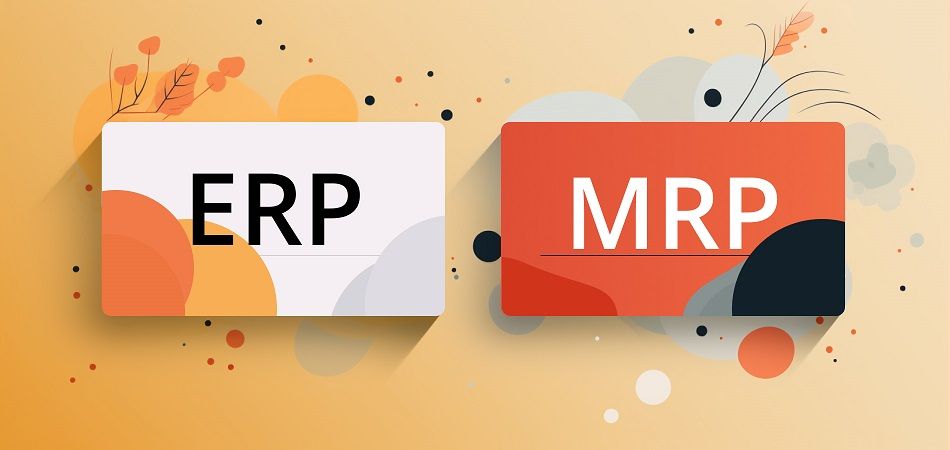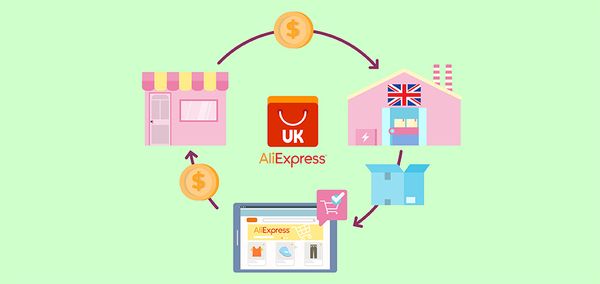ERP vs. MRP: What's The Difference

Have you ever wondered how businesses manage their manufacturing operations? It's no easy feat, but luckily, technology has come to the rescue with systems like MRP (Material Requirements Planning) and ERP (Enterprise Resource Planning). In this blog, we'll explore the fascinating world of ERP vs. MRP and unravel the differences between these two systems.
So, buckle up and get ready to dive into the nitty-gritty details of ERP and MRP!
What Is MRP
Let's start with MRP - the tried and tested manufacturing superhero. MRP is a system that focuses on material planning, ensuring that businesses have the right materials at the right time to meet their production demands. It's all about optimizing inventory, streamlining production schedules, and keeping things running smoothly.
Features of MRP
To know MRP well, we will have to take a closer look at its features. Let's see how it will supercharge your operations and leave your competitors in awe.
1. Material requirements planning
At the core of MRP lies its ability to calculate the exact quantity and timing of materials needed for production. By considering factors such as lead times, production schedules, and demand forecasts, MRP helps businesses minimize wastage and maintain optimal inventory levels.
| Get Started Now to Grow Your Online Business with the Best AliExpress Dropshipping Tool - DSers! |
2. Inventory management
MRP enables efficient inventory management by keeping track of stock levels, tracking usage patterns, and triggering purchase orders when inventory falls below predetermined thresholds. This way, businesses can avoid stockouts or excessive inventory, striking a delicate balance.
3. Production scheduling
With MRP, businesses can create precise production schedules that align with their material availability. By optimizing the sequence and timing of production operations, MRP ensures efficient resource utilization, reduces downtime, and keeps production on track.
Benefits of the MRP System
Hold on tight because we're about to uncover the incredible benefits of the MRP system. Below-mentioned are the top three benefits of the MRP system.
1. Reduces inventory costs
By providing accurate insights into material requirements, MRP helps businesses minimize excess inventory. This reduction in holding costs frees up capital for other investments and improves overall financial performance.
2. Increases productivity and efficiency
Through streamlined production scheduling, MRP optimizes resource utilization and reduces idle time. This, in turn, boosts productivity and efficiency, allowing businesses to meet customer demands promptly.
3. Improves customer service
With MRP, businesses can ensure that they always have the necessary materials to fulfill customer orders on time. By reducing lead times and avoiding production delays, MRP helps improve customer satisfaction and build stronger relationships.
What Is ERP
Now that we've explored MRP, it's time to meet ERP - the holistic business management solution. ERP goes beyond manufacturing and encompasses various business functions such as finance, human resources, sales, and supply chain management. It's an all-encompassing system designed to streamline workflows and enhance collaboration across different departments.
Key Features of ERP
The manufacturing ERP software system has some significant features that are as follows:
1. Integration of various business functions
One of the core strengths of ERP is its ability to integrate multiple business functions into a single system. This means that departments like finance, HR, and supply chain can seamlessly share information and collaborate, eliminating silos and improving overall efficiency.
2. Real-time information sharing
ERP systems provide real-time data and insights to decision-makers. This enables timely decision-making, empowers employees with accurate information, and enhances the overall responsiveness of the organization.
3. Streamlined workflows and processes
By automating repetitive tasks and standardizing processes, ERP eliminates manual errors and reduces administrative burdens. This streamlining of workflows ensures consistent quality, improves operational efficiency, and frees up time for employees to focus on value-added activities.
Benefits of ERP System
Installation of an ERP system has many tangible benefits and some of them are as follows:
1. Improved visibility and control over business operations
With ERP, businesses gain a comprehensive view of their operations. They can track performance metrics, monitor inventory levels, and identify bottleneck necks or inefficiencies in real-time. This enhanced visibility enables better decision-making and empowers businesses to stay agile in a rapidly changing market.
2. Enhanced collaboration and communication
ERP fosters collaboration and communication across different departments. By providing a centralized platform for sharing information, employees can easily access relevant data, collaborate on projects, and communicate effectively. This seamless flow of information promotes teamwork, reduces miscommunication, and strengthens the overall cohesion of the organization.
3. Reduced operational costs
Through process automation, ERP systems help businesses reduce operational costs. By eliminating manual tasks, minimizing errors, and optimizing resource utilization, businesses can achieve greater efficiency and cost savings. Moreover, streamlined workflows enable faster order processing, shorter lead times, and reduced cycle times, resulting in improved customer satisfaction and potential for business growth.
Differences between MRP and ERP Systems
People are often confused with these two similar terms: MRP and ERP as they share the same background and history. But even though they are completely different from each other in terms of capabilities, performances, and functionalities. Let's see what are the basic differences between MRP and ERP systems, with some eye-opening points!
Scope
- MRP is focused specifically on material planning and production scheduling. It caters to the needs of manufacturing businesses by ensuring optimal inventory levels and efficient production processes.
- On the other hand, ERP encompasses a broader range of business functions, including finance, HR, sales, and supply chain management. It offers a holistic approach to managing all aspects of a business, from manufacturing to customer relationship management.
Integration
- MRP is typically a standalone system dedicated to manufacturing processes. It operates independently, focusing solely on material planning and production.
- In contrast, ERP integrates multiple business functions into a single cohesive system. It breaks down information silos and enables seamless data sharing between departments, facilitating a unified view of the organization.
Flexibility
- MRP systems are designed to meet specific manufacturing needs. They are tailored to the industry's unique requirements and provide specialized functionalities to optimize production operations.
- ERP systems are highly flexible and customizable. They can adapt to different industries and business models, allowing organizations to configure the system according to their specific needs and workflows.
When to Use ERP vs. MRP
Small businesses with limited manufacturing needs may find MRP to be a suitable choice. MRP systems offer focused functionalities that cater to the specific requirements of manufacturing, allowing businesses to optimize their production processes and manage inventory effectively.
Medium to large businesses with complex operations and multiple business functions would benefit from implementing an ERP system. ERP provides a comprehensive solution that integrates various departments, streamlines workflows, and enables efficient communication and collaboration across the organization. It offers enhanced visibility, control, and scalability, making it ideal for businesses with diverse operational needs.
In some cases, a combination of both MRP and ERP systems may be the most suitable approach. This hybrid solution allows businesses to leverage the strengths of each system. They can use MRP for focused manufacturing processes while harnessing the power of ERP to manage other aspects of their operations. This integrated approach can maximize efficiency, productivity, and overall business performance.
Conclusion
In the battle of ERP vs. MRP, there's no winner or loser. Each system serves a specific purpose and caters to different business needs. MRP shines in the manufacturing realm, optimizing material planning and production scheduling. On the other hand, ERP takes a holistic approach, integrating multiple business functions and providing a comprehensive solution for streamlined workflows and improved collaboration.
Understanding the differences between ERP and MRP is crucial for businesses to make informed decisions about their operational management. Whether you're a small manufacturer looking to optimize production or a large enterprise seeking to streamline all aspects of your business, the right system awaits you. Choose wisely, embrace the power of technology, and unlock the full potential of your organization. The future of efficient and productive operations begins with ERP and MRP.













 Company
Company
 Why Choose DSers
Why Choose DSers
 Blog
Blog
 Help Center
Help Center




 Live Chat
Live Chat